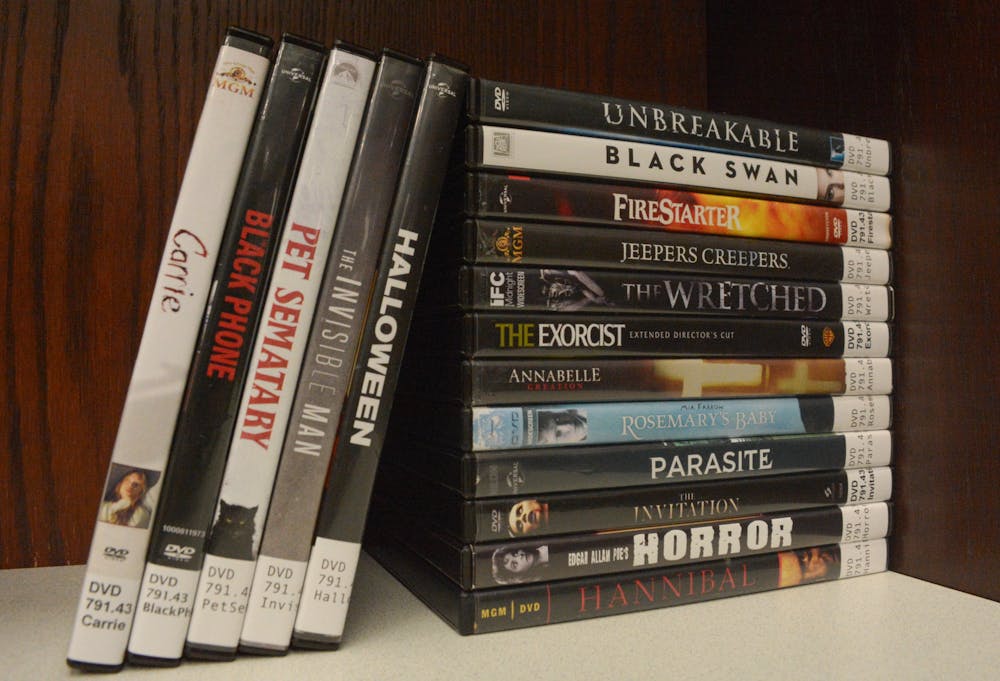From iconic Halloween figures like Frankenstein, vampires, mummies and more, horror films capture the nature of these imagined beings to create films for audiences to enjoy. Over time, psychological elements that amplify the fear factor of horror films have made them even creepier and more popular.
Dr. Andrea Kelley, associate professor of film and media studies at Auburn University, discussed the elements of horror movies, how they have evolved and some advice when watching the films.
Kelley received her undergraduate degree at Columbia University with a major in English and her Ph.D. in media studies from Indiana University.
To define horror films, Kelley used scholar and film critic Robin Wood’s definition.
“He said, ‘horror films, what they do is present us with some sense of normality that has been threatened by a monster,’” Kelley said. “So we have some sense of what is normal in the world and then there’s a monster that threatens it in some way and turns things upside down. That’s the driving force of most horror films.”
In the 1960’s, obvious horror figures like Frankenstein, mummies and vampires were described by Kelley to demonstrate how people would automatically know the figures were not human.
Kelley recalled when Alfred Hitchcock made the film “Psycho,” the entire genre changed and marked the beginning of modern horror.
“As far as the genre of horror film, that movie turned it all on its head because suddenly, the monster was a person,” said Kelley. “What made it threatening was something that was much more psychological and internal.”
This added a more unsettling and terrifying element to horror films, giving the audience the feeling that, as Kelley described, “horror is among us.” Kelley's favorite example she provided of a psychologically thrilling horror movie was “Get Out,” directed by Jordan Peele.
Kelley noted that people still go to movie theaters to watch horror movies for the experience.
“People like to go to the movies to see horror because it is a social experience,” Kelley said. “There is something about being in a dark theater with strangers that adds a whole other layer to it. It's fun to be loud at horror movies, and it's much more interactive and social that way.”
A24, a production company and distributor that Kelley recognized for its growing popularity, produced numerous horror films that have recently become popular. Kelley mentioned two popular ones: “Talk To Me” and “Men.”
“It’s interesting for a company that’s known for being a little bit prestige, a little bit art-house indie. They’re really digging their heels in with horror and think that says a lot about the strength of the genre and how vital it is culturally,” Kelley said.
Kelley also acknowledged how streaming services are using the month of October to promote their horror films and are feeding off of the genre’s popularity.
Another one of Kelley’s favorite horror films is “Don’t Look Now” from the 1970s. It is a common recommendation she gives to her students.
“I find it really powerful and haunting, and I think the cinematography is really beautiful,” Kelley said.
For those who shy away from horror movies, Kelley said there is a way to “maintain a critical distancing.”
Elements of the film, such as lighting and camera angles, can be critiqued to understand why the people behind the horror film made the decisions they did. By understanding “the why,” Kelley said the audience can focus on the elements by being detached from the film rather than the horror itself.
Watching horror films at home is also another method Kelley recommended. Being able to watch the movie on a smaller screen and control the sound and pace of the movie has the potential to be comforting.
“Things haunt people differently,” Kelley said.
Some final advice Kelley provided was to expand film palettes this Halloween.
“Watch things beyond your comfort zone. If you haven’t seen a lot of classic horror, or if you’re really into ‘Slasher’ movies but you’ve never gone back to see the originals, go back and watch them,” Kelley said.
Peacock, Max and Hulu are streaming companies Kelley mentioned that provide some of her favorite horror films.
Whether or not you are a horror movie lover, there are ways to enjoy the genre. Whether it is with a group of people in theaters this Halloween or in the comfort of home, horror films can add an extra spooky element to the holiday.
Do you like this story? The Plainsman doesn't accept money from tuition or student fees, and we don't charge a subscription fee. But you can donate to support The Plainsman.
Piper Bosart, junior in journalism, is the assistant culture editor for The Auburn Plainsman. She has been with The Plainsman since January, 2022.





